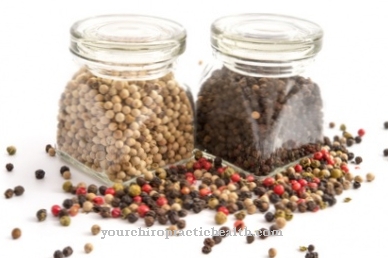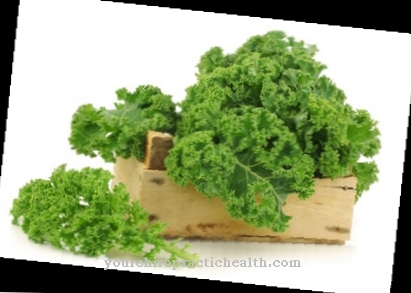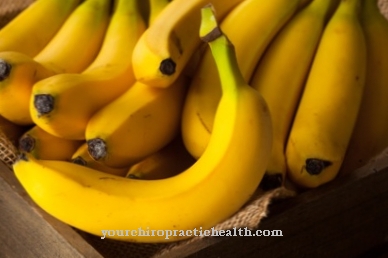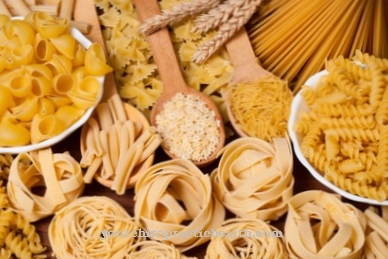Potatoes have become indispensable as a tasty and nutritious staple food and part of numerous dishes. The inexpensive tubers are easy to grow and also serve as feed and raw material for industrial use. On average, every German eats around 60 kilograms of potatoes a year.
What you should know about potatoes

As a useful plant, the potato belongs to the nightshade family. Around 400,000 tons are harvested worldwide every year. The potato tubers develop in the soil just below the surface. The herbaceous, green potato plant with short-stemmed leaves can grow up to a meter high.
Seed-containing berries develop in the flowers. The green colored parts of the potato plant are poisonous. They contain alkaloids (nitrogenous, poisonous plant components). The edible tuber was brought to Europe by sea from South America in the 16th century. The first potatoes were shipped to mainland Europe from the Canary Islands. The first German potato cultivation is said to have taken place around 1650. A large number of potato varieties are now available on the market. The range includes more than 5500 different types of table potatoes. On the one hand, there are differences in maturity and quality groups.
The potato harvest takes place from late May to mid-October. The harvest season is divided into very early, early, medium early and medium late to very late. A distinction is also made between types of food and commercial types. An allocation is usually possible based on information on the tuber shape, skin and meat color. The name of the potato indicates the type of cooking: "waxy", "predominantly waxy" or "floury cooking". Waxy potatoes are particularly suitable for preparing dishes. The potato peel does not burst when cooked and the potato shows a firm structure and a smooth cut surface.
Potatoes can be boiled, deep-fried, fried, grilled, or steamed. They can be combined in many ways with dishes. Potatoes are valuable, healthy foods because of their high content of vitamins, minerals and trace elements as well as their high water content. The pleasant taste of the potato varies depending on how it is prepared. Since it does not have a dominant taste of its own, it can easily absorb other flavors of the food combination.
Importance to health
Potatoes have numerous valuable nutrients and the fiber they contain ensures a feeling of satiety for a long time. This reduces the feeling of hunger and, above all, the surprising ravenous hunger with its fatal effects.
The suitability of potatoes for a balanced diet is also illustrated by the high water content and the low fat content. The low-calorie nutrient supplier contains important minerals and vitamins as well as a complete amino acid profile as well as starch and carotenoids (plant pigments with antioxidant effects). This provides the body with energy reserves and the antioxidants can lower the risk of cancer. The high content of the special protective vitamin C in potatoes is also important for health. A serving of potatoes covers half of the daily requirement of vitamin C and the entire daily requirement of the mineral potassium.
The results of a Canadian research study indicated that potatoes noticeably improve memory performance. According to various test results, potatoes should also have antihypertensive ingredients. This is intended to act on the enzyme that is responsible for the production of a certain hormone. This hormone is supposed to constrict blood vessels in the long term and thereby increase blood pressure. Overall, the body's immune system is strengthened by the high nutrient content of the potatoes and the metabolism is regulated.
Ingredients & nutritional values
| Nutritional information | Amount per 100 gram |
| Calories 77 | Fat content 0.1 g |
| cholesterol 0 mg | sodium 6 mg |
| potassium 421 mg | carbohydrates 17 g |
| protein 2 g | vitamin C 19.7 mg |
Table potatoes contain essential vitamins. In addition to vitamin C, these include vitamins A, B1, B2, B3 (niacin), B5, B6, folic acid, E, K and pantothenic acid. Potatoes consist of 77 percent water and 14.8 percent of the carbohydrates starch, glucose, fructose and sucrose. The protein content is only 2 percent. But it is very high quality. The fat content is only 0.1 percent. Potatoes also contain 2.1 percent fiber and one percent minerals and trace elements. These include:
- magnesium
- sodium
- potassium
- selenium
- calcium
- iron
- zinc
- copper
- manganese
- phosphorus
- chrome
Potatoes also have antioxidants. Green-colored potato parts contain poisonous plant substances, mainly solanine.
Intolerances & allergies
Individual intolerance reactions are possible through the consumption of potatoes. The immune system defends itself against an ingredient in the food that can be harmless. However, it is recognized by the immune system as a pollutant.
This leads to the defense reaction. After consuming raw potatoes, allergic reactions are possible. This phenomenon can occur in rare cases with cross allergies. The consumption of potatoes in connection with hydrogenated fats and preservatives (chips) can cause health problems. Anyone who eats potatoes raw risks at least unpleasant stomach problems.
Shopping & kitchen tips
Potatoes are an inexpensive staple food that is available everywhere in Germany in supermarkets, fruit and vegetable shops, farms and weekend markets. If you want to keep potatoes longer, you should inquire about their shelf life when buying them.
For a longer cellar, later varieties should be purchased. Popular varieties are "Laura" or "Pink Pine Cones". Potatoes should look dry, clean, and firm. They may have an earthy, but not musty, smell. In addition, potatoes should be evenly colored and free from bruises. It is also important to ensure that the labeling is correct and that it includes the price, type of cook and filling quantity and the company of origin.
Dark, cool, and dry rooms are good for storing potatoes. If possible, basement rooms should be used for this. An advantageous air supply can be ensured by a slatted frame or an air-permeable wooden box. The ideal storage temperature is between 4 and 10 degrees Celsius. A warmer temperature stimulates the formation of germs. Rotten potatoes must be sorted out immediately. Types of fruit, especially apples, which develop gases during storage, should not be kept near potatoes.
Preparation tips
Before preparation, green areas must be cut out generously. In order to preserve the nutrients immediately under the shell when cooking, cooking with the shell is advantageous.The boiled potatoes should be removed from the cooking water as soon as possible, otherwise there is a risk of vitamin C loss. As part of various dishes, care should be taken to use the correct type of cooking. Waxy potatoes are particularly suitable for potato salads, gratins or fried potatoes.
Predominantly waxy table potatoes are preferred for jacket potatoes because their peel cracks easily. Many delicious dishes are prepared with potatoes. Numerous recipe ideas are available for this. Combined with all types of meat and poultry, in conjunction with delicate sauces or filled with delicious quark, potatoes are very popular. This also applies to potato gratins, fried potatoes and potato soups. The multitude of delicate ways of preparing inexpensive potatoes even inspire gourmets.












.jpg)

.jpg)
.jpg)











.jpg)